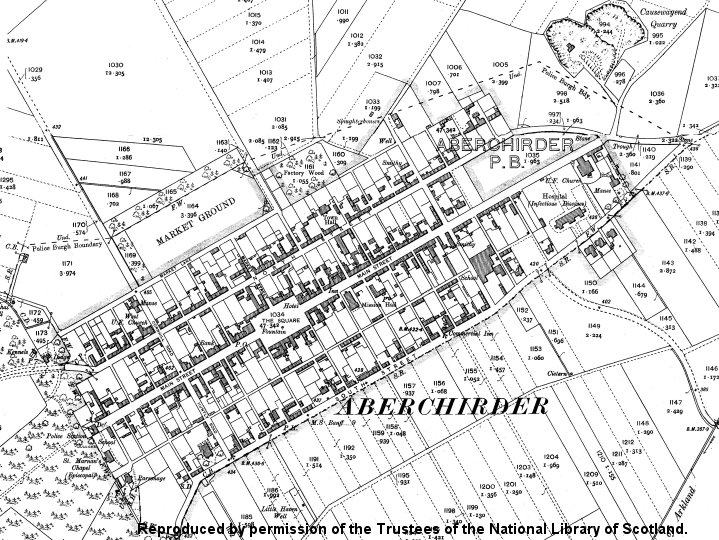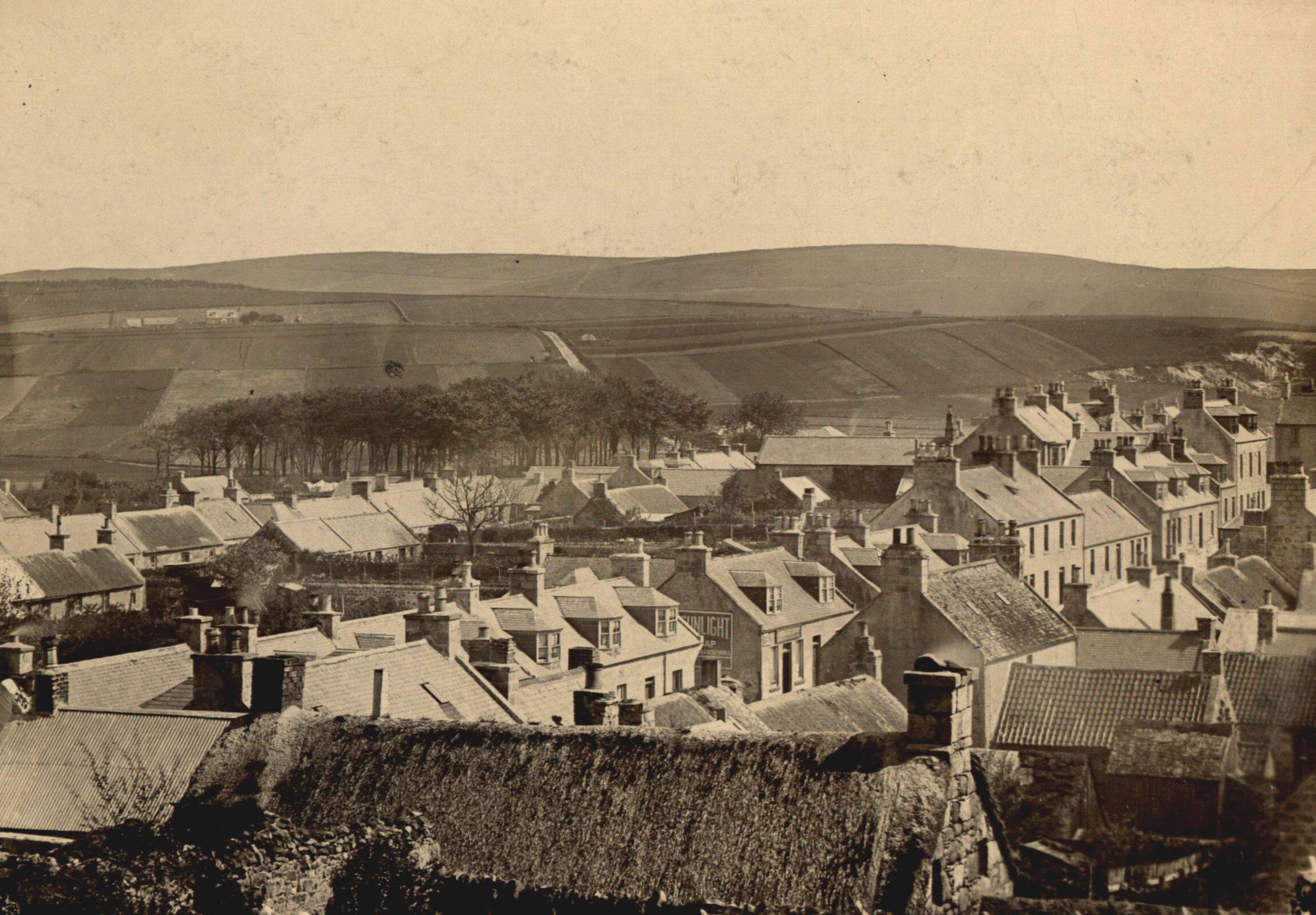Improvements around 1900
The period also saw an important improvement in the original housing stock either side of 1900, when people with money either built new properties or improved existing ones. Evidence of this could be seen – particularly in Main Street and the Square – in the date stones, slated roofs, heightening and added storeys. Notable extensions were made to the North of Scotland Bank and bank house (1894), Ferniebrae (Dr Whitton, 1896) and Southview (1902).
This extract from the Banffshire Journal’s End Of The Year report for 1896 shows how much activity there had been on the building front:
“Improvements – During the year a number of new buildings have been erected. On the property of Mr Alex McRobert, Fill-the-Cap, a fine block of buildings, with dressed granite front, has been reared on the north-west corner of Main St and Cornhill Rd, and is partly occupied [No.33A] as law offices by Mr William Grant, solicitor. On the south side of Main St, nearly opposite the North of Scotland Bank, a substantial block of buildings [Nos.48-52], also with dressed front, is being erected for Mr William Chalmers, butcher. Very extensive additions to, and improvements upon, the premises of Mr George Murray, merchant, the Square [No.1], have been carried out… On South Street, at Ferniebrae, the residence of Dr Whitton, additions on a very large scale have been made… A pretty cottage for Mrs Bennet, formerly of Auchintoul Farm, has been built near the Hospital but outside the burgh.”
No. 60 was rebuilt in 1902-03 by Alex Gardiner, the printer, to form a shop at 62 ½ and two houses at 62 and 60.
Three houses owned by George Fordyce, mason, at 58-54 were converted into shops at 58 and 56, and a house at 56 ½.
Two houses and shops at 52, 50 and 48 had been upgraded with a dressed stone frontage in 1896 by owner William Chalmers, flesher.
House No. 46 and three houses in the close were sold in 1904 by builder Alexander McHardy to the Great North of Scotland Railway Company to build its motor bus garage.
Three houses at 42, 40 and 38 were bought by draper John Auchinachie and converted into a two-storey building with a house at 42 and a shop on the corner of Huntly Road.
Figures for the ownership and occupation of Aberchirder’s housing stock at the end of World War One are revealing. Of 263 houses in the burgh, 25% were owned by residents and occupied by them; 44 were owned by residents and rented out; and 31% were owned by people outside the burgh (either in the rural parish or further afield) and rented out.
Professionals, shopkeepers and tradesmen had been keeping existing houses in good condition, or improving them, or building new ones. But owners of many properties could not afford to (or declined to) keep in good condition the houses they rented out, as most tenants could not afford sustainable rents. This was to provide a challenge for the Town Council in the years that followed.

















